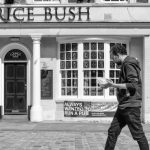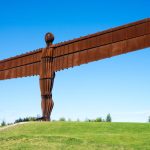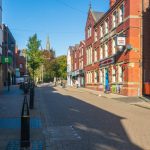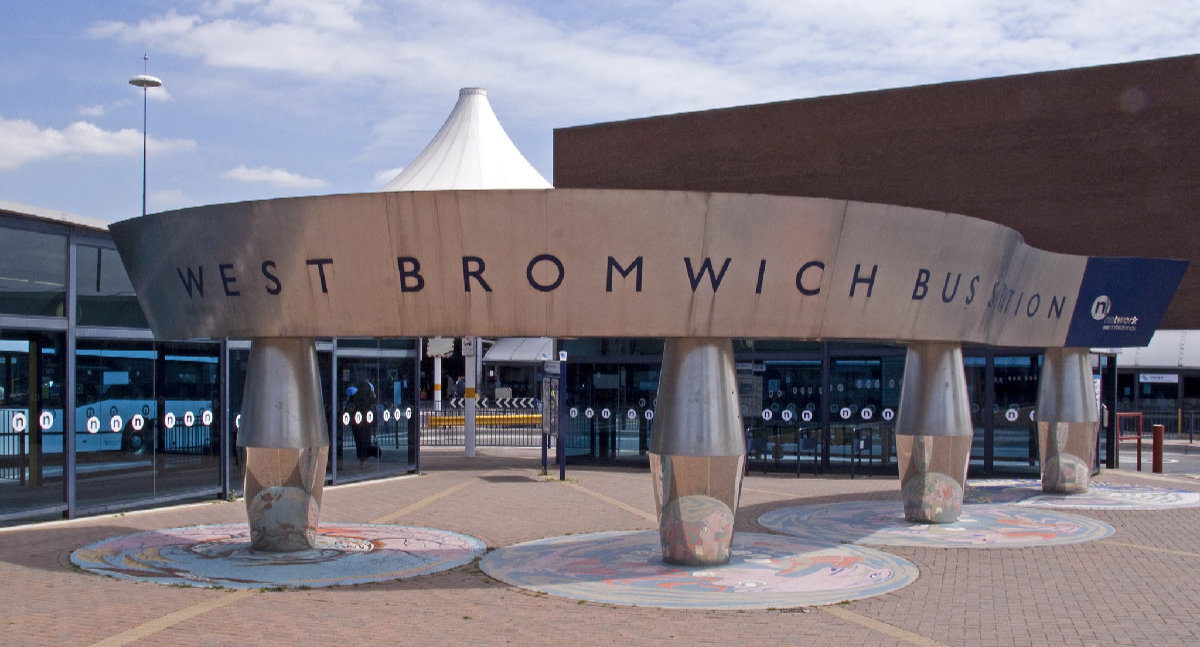
West Bromwich, or West Brom, is known for its strong accent and lovable people. They have a friendly, welcoming attitude and reportedly like a bit of a tipple… but don’t we all nowadays? With the world going down the tubes and civilized society suffering the wrath of unexpected plagues: how do we stay positive?
We talk up places like West Brom and make them into somewhere everyone wants to be. We do this so we all have something to look forward to when we look back at this period of our lives. something to look forward to for all you lovely readers would be to find Five Minutes Spare, so you can read about all our lovely articles. Who knows? We might even have covered your town or city…
So let’s knock another one of the list of Great British Towns by delving into West Brom. Where is it, what’s in it, and why should you pay it a visit? Let’s find out…
The Early Days of West Bromwich
Let’s start our story away back with the birth of the town. Nowadays, we know this thriving market town to be a part of historic Staffordshire and situated in the Midlands. With a population around 78k, and with several historic buildings to choose from, West Bromwich wasn’t always this way.
West Brom was first mentioned in the Domesday Survey of 1086. This was a survey ordered by William the Conqueror, who wanted to assess the lands he had occupied. A survey was carried out that extensively documented all of the value of lands in England. It was the first of its kind in Britain and we can still view it online today.
West Bromwich is recorded in the Domesday Survey as having been the lands of William, son of Ansculf. This land had ten villagers, 3 men’s plough teams, one Lord’s plough team, had half a league of woodland, and was worth about 2 pounds in total. You can read the full entry yourself, here.
As of the 12th century, a Benedictine Priory sprung up near the town. The Benedictine friars would have tended to travel, taken care of the sick, and might even have been involved in providing fresh water for the town. King Henry VIII eventually destroyed the friaries and monasteries, but the West Brom priory would have already been a couple of hundred years old by then. Monks were known for charitable works and establishing hospitals. Henry VIII left gaping holes in the social care system when he disbanded them.
Sometime in the 12th century, All Saints Church would have been erected and is still standing today. Most of the expansion of West Bromwich didn’t come until early in the 19th century, but in the 16th century there was a small growth spurt, too. This was probably spurred on by the incoming arrival of the Industrial Era, when the town truly sprang to life.
Not much is known about West Bromwich over the next hundred years or two. It was a seemingly sleepy town with little to no growth, right up until the arrival of the railway. As with most English towns, the 19th century led to massive boosts in industry which, in turn, led to a larger population. Prior to the 1800s, however, West Brom was mostly just farmland.
Industrial Era West Bromwich
In 1767, poet Richard Jargo called the Sandwell area of town particularly beautiful in his poetry. In those days, the southern side of town was still largely farmland and the market in West Bromwich was earning a decent trade from those on their way to Birmingham. A Wayside Cross sprang up in the late 17th century and traded right up until it was replaced around a hundred years later. There is still a street named for this cross in town.
By the start of the 18th century, most of the town’s occupants lived in and around the Charlemont, Bird End, and Wigmore areas. There were manor houses dotted around the farmland to accommodate the local nobility, and the town was gradually starting to awaken from its hundreds of years of sleepy slumber. Charlemont Hall, a great house built for nobility, was built but has since been destroyed. Some of the streets in towns retain its name, and we know from descriptions at the time that it was a lofty building of some grandeur.
In the 18th century, Sandwell Hall, formerly the priory site, had become the home of the Dartmouth’s. The estate itself was fractured in 1930 when the M5 was run through it, but there are still parts of it that can be seen from the Golf courses in the area. The town’s industrial heritage first took root in the 16th century, when Bromwich Forge first opened. There were 17th century Ironworks in the same area, around Bustleholm. In 1784, 7 people were taken to court from the forge, although it is not mentioned why. The forge stopped its blasting of iron in 1830… just in time for the town’s true industrial heritage to commence.
There Is Coal In Those There Hills
Coal deposits were discovered in West Bromwich, sometime in the early 19th century. With the arrival of the railway line, the coal could be mined, transported north and south, and taken on to where it needed to go. There were smelters in town, still firing the iron and using the coal to do so. It became big by making industrial-strength springs and coils, making nails – and even gun designs.
In 1855, Charleston house was extended and the last occupant to live in it left in 1921. The area the house stood in was then turned into the housing estate we know and love nowadays to have the same name. This removing of the slum housing in the early 1920s was common throughout Britain. As the Industrial eras took off, so too did the need for more housing. With families living in single rooms, the slums had to be cleared and were replaced with the council housing we know now. This single movement elevated whole families into a far better quality of life, all in one fell swoop.
In 1888, West Bromwich was made into a county borough, partially due to the work put in by the town improvement commission, which was established in 1854. This commission were allowed to heat, light, and generally cater to the betterment of the town in all possible ways. They would have been the ones to light the streets and pump in clean water. In 1867 the town was placed under the Borough of Wednesbury, only to later be made into a borough in its own right as the town expanded.
Historically speaking, the early 20th century saw the town a conservative supporting town, although this has swung back and forth over the years. During WWI the town would have suffered badly due to the governments inane decision to send thousands of troops from the same area abroad to fight the same areas of trenches. Many young men died across the board and West Bromwich was no exception.
When the young men that did return came home, however, it was to have freshly built council houses waiting for them. The first one was built in 1920 and there have been more added every year since.
The War and Modern West Bromwich
The war years were difficult enough the first time around, and then we went and had another. WWII saw 58 people killed by the Luftwaffe. Raids in November of 1940 saw Oak road and Lombard Street in town almost completely destroyed. Other raids brought no deaths, yet those on the night of the Birmingham Blitz killed the majority. Again, we sent our young men overseas, again, they died.
In the 60s and 70s, the M5 was added, along with a whole bunch of other roads that opened up the area for further trade and tourism. Only five miles from the centre of Birmingham, West Bromwich was always going to benefit from passing trade. The County Borough was expanded again and again as the size of the town grew… up until the recessions of the 80s and the death of the coal mining industry… when the area fell deeply into troubled times.
In the 70’s it was decided that the town centre would be improved. The Queen’s Square was first opened and was extensively refurbished in 2011. The commercial history of the town became the new focus, with industry fading into the background as a long-forgotten source of wealth. To this day, the only evidence of the once opulent success of this Industrial town lies in the scars of the surrounding landscape, where the evidence of coal mining can be seen everywhere you turn.
The landscape is healing, but West Bromwich is still on the down. Although several major retailers have come and gone throughout the years, there is only a handful that have lasted the distance. It is the same in every sector of West Brom, with most industries flocking to Birmingham after the last recession.
What’s next for West Bromwich? We’d like to see a cultural revival of the use of the town centre. By shopping local and breathing life back into the high street, this is one town that can come back with a vengeance… so watch this space.
Let’s take a break from sludging through this history to talk about fun things we know about West Bromwich… is it really a cool place to be, or are we lying?
A Few Trivia Facts About West Bromwich
Every town has got its peaks, its perks, and its downsides. We don’t know about the latter, but we always have fun sourcing the good points. Here are the Five Minutes Spare favourite facts about West Bromwich for your approval:
- They rebuilt the All Saints Church in 1872 on the site of the existing one dating back to around 1100AD. We found a couple of before and after pictures here which shows the new one doesn’t look a whole lot different!
- The most famous thing in the whole town is their football club. West Bromwich Albion are one of the twelve original founding members of the football league in England. They were established as long ago as 1878.
- Birmingham Live make the not-so-outlandish claim that Desi-pubs started in Birmingham. They are a growing trend, no matter where this cultural fusion came from.
- A local man who ran a pound emporium went on to run a multi-million-pound empire, now known as Poundland.
There are loads of things to see and do in West Bromwich, but these were the funniest highlights that we could pick out. We’re still pretty shocked that Poundland started this close to home. Birmingham shoppers have been bidding on bargains since back before the rest of the country knew they existed!
Famous People from West Bromwich!
There has been a varied mix of famous faces to have emerged from the West Bromwich bosom over the years. With a little nod and a wink, we present you with our Five Minute Spare approved list of famous people from West Brom. Enjoy!
- Cat Deeley, the spectacularly well-dressed TV presenter, is a West Bromwich gel.
- Robert Plant… Lead singer of Led Zeppelin, also from West Bromwich.
- DC and Marvel Comic Cartoonist John Byrne is a West Bromwich boy.
- Philip Lynott, a founding member of Thin Lizzy and responsible for such wonders as ‘Whisky in the Jar’ was born here and, unfortunately, died at 37.
- Actor Matthew Marsden was born here. You might not know him, but he has been in a plethora of films… always the sign of a great actor.
As you can see, West Bromwich didn’t miss out in the famous people you might meet on the street stakes. And now that we have that part out of the way, we can look at what’s happening in terms of tourism…
The Best Things to do in West Bromwich
That’s right! West Bromwich might well be seen as a tourist destination to those that are new to British shores. OK, so it’s industrial… but where better to showcase the industrial era of Britain?
Historic Sights and Landmarks
Falling hard into the landmark category, we have the Shree Krishna Mandir temple in West Bromwich. The first of its kind in the UK, the temple represents the being of a Hindu God and his many layers. It is truly awesome to see and wonderful that Brits are finally opening their hearts to a little otherworldly culture.
You will see a singular steeple that towers over all else in town. This steeple belongs to the Holy Trinity Church and stands above the trees, in its own gardens. This is a beautiful old building that still holds services, should you want to attend church while you are staying in West Bromwich. It also has the sculpture “I am the King of the Castle ” nearby a rather attractive Bronze piece by Cardiff born Sculptor, Laura Ford.
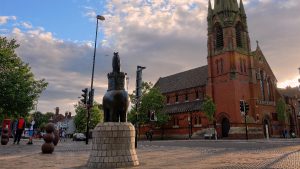
Modern art meets historic building with the imposing Church of Saint Michael in the background.
Image: padmak/Shutterstock.com
Museums and Galleries
The Oak House Museum is a museum that used to be a manor house, all those years ago. It is filled with 17th-century furniture and styled in the fashion of a yeoman farmer’s abode. The Turton family owned the house and were renowned for helping those less fortunate than themselves to eat. It is nice to think that, nearly 350 years later, that kindness has not been forgotten.
Check out the Manor House Museum if you love history and architecture. The great hall addition was believed to be the first of its kind in the UK, utilising the earliest known type of construction. The building operated as a pub right up until the 1960s, when it was closed, renovated, and turned into its true self as a museum.
As for Art Galleries, the Birmingham Museum and Art Gallery is probably closest to a grand scale. You can also head north to Painted Clay, or even more north to the New Art Gallery Walsall. At least you have plenty of choices, even if you may need to travel a little.
Outdoor Attractions
One of the top-rated attractions in the area is the Sandwell Valley Country Park. West Bromwich is just the right distance away from Birmingham to be removed enough to have a nature area… and thank goodness. The park includes shops, tearooms, and even a couple of farms. It’s a firm favourite among those that like to go antiquing on the weekends…
Technically it is inside but with an outdoor theme… you can go to Boulder Central in West Bromwich and practice your climbing skills. Try bouldering or scale their rock walls in the strapped-in safety of an indoor climbing environment. Kids love it, teenagers love it, adults love it, plus its great team building in West Bromwich, too.
If you hire a bike or love a good long nature walk, check out the Miner’s Trail. Best done with a mountain bike, this area allows you to trek across countryside in the middle of a bustling area of the country. Take a break and get on your bike to enjoy this one.
Sports and Recreation
Let’s not forget what it was that put West Bromwich on the map – football. This place was one of the first in England to pick up the sport and run with it, eventually becoming founding members of the original English Football League. You can find them at the Hawthorns most days of the week. Get a stadium tour or go see a game.
Since West Bromwich is in Britain, it has at least one golf club. We actually found three within erm… teeing distance. You can choose from Dartmouth Golf Course, the Sandwell Park Golf Club, or DPL Golf LTD for all your golfing goods.
It Rugby Union is your game then West Bromwich can offer Wednesbury RUFC, who are near enough to be their own rugby club as they are only around 4 miles away.
Shopping and Retail
We mentioned the newly refurbished Queens Square Shopping Centre before, as it was first opened many, many years ago. You can alternate if you like, and head for the Kings Square Shopping Centre, their direct rivals. You also have the choice of the New Square, and of various other cool little stores dotted around town. Never let it be said that you don’t have plenty of shopping options in West Bromwich.
Other Notable Attractions in West Bromwich
Of course, we couldn’t fit all the multiple sights of West Bromwich into one article. So instead, we added on a few more sights to see in West Brom, right here:
- Looking for indoor soft play in West Bromwich? Try Funky Monkeys. They get rave reviews.
- There is a Laser World in West Bromwich, which is another site that is great for team building.
- Jitterbugs Party World is available for hire for kids of all ages, should you wish to throw a party.
- Check out the Sandwell Valley Riding Centre if you are a horse lover. Your teenagers might thank you and you could just spark a lifelong passion.
So get out there and get visiting. West Bromwich has plenty to offer if you have got the stomach.
How To Get To West Bromwich?
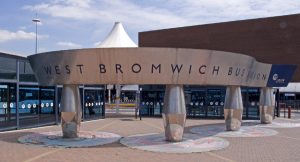
Tony Hisgett, CC BY 2.0
You are just as up-to-speed as we are on West Bromwich, but here is how to get there, so you don’t go getting lost…
By Road
Head north-west out of Birmingham until you hit the M5, then follow the signs to West Bromwich. If you hit Dudley, you went too far.
By Rail
West Bromwich is a disused station, but you can choose from the Hawthorns, Sandwell & Dudley, of the Tame Bridge Parkway, instead.
By Air
Birmingham is your nearest airport.
By Sea
Alas, West Bromwich is landlocked. Turn her around and head back to deep waters.
Got Five Minutes Left?
If you can spare another five minutes, you might want to spend them browsing our lists. We have plenty of fun articles on thousands of funnier places that you can plan your next staycation around. Make next year’s holiday a blast – or just research your next four-legged-friend. We have a little of everything… see for yourself!

